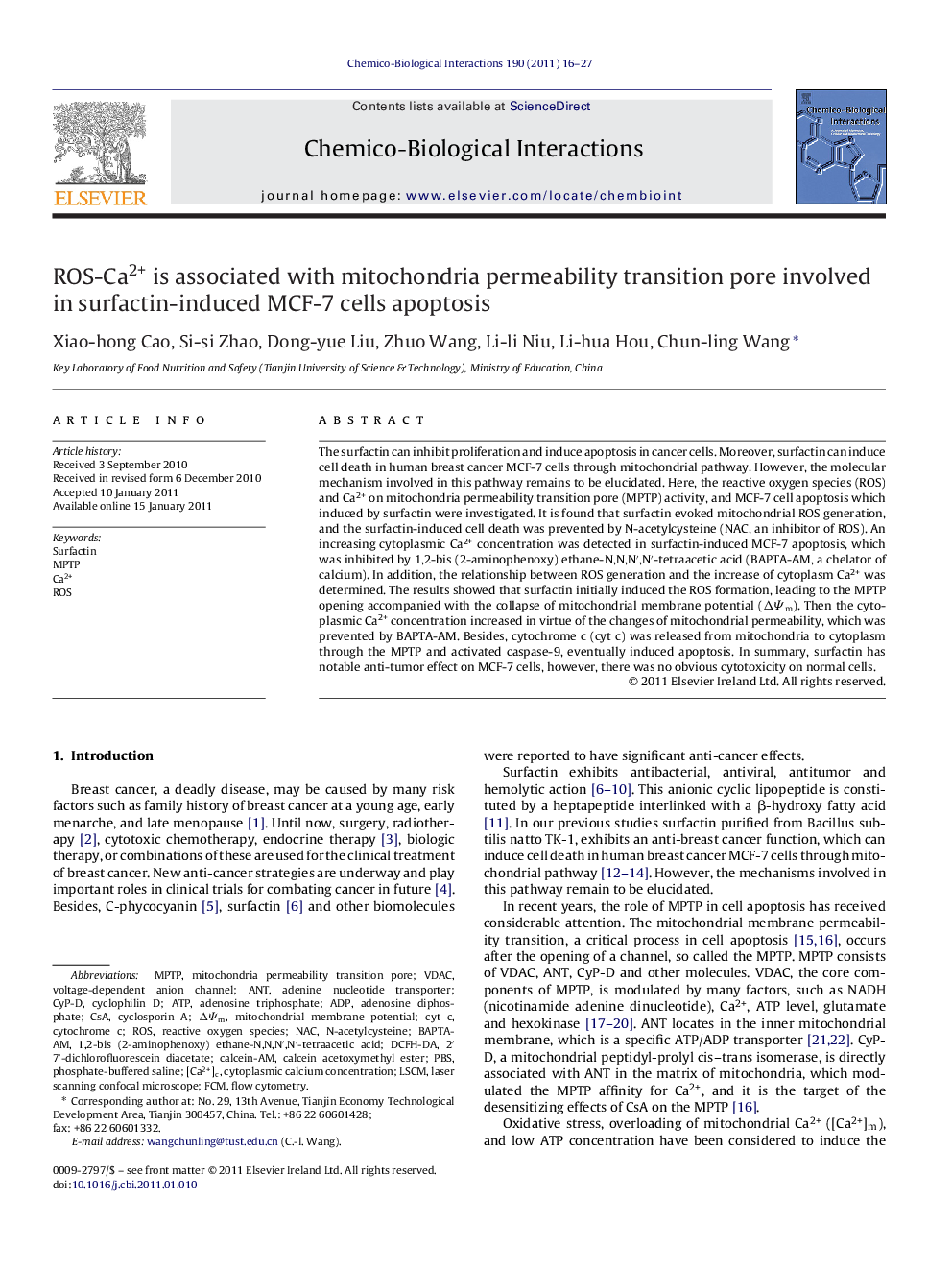| Article ID | Journal | Published Year | Pages | File Type |
|---|---|---|---|---|
| 5848537 | Chemico-Biological Interactions | 2011 | 12 Pages |
Abstract
The surfactin can inhibit proliferation and induce apoptosis in cancer cells. Moreover, surfactin can induce cell death in human breast cancer MCF-7 cells through mitochondrial pathway. However, the molecular mechanism involved in this pathway remains to be elucidated. Here, the reactive oxygen species (ROS) and Ca2+ on mitochondria permeability transition pore (MPTP) activity, and MCF-7 cell apoptosis which induced by surfactin were investigated. It is found that surfactin evoked mitochondrial ROS generation, and the surfactin-induced cell death was prevented by N-acetylcysteine (NAC, an inhibitor of ROS). An increasing cytoplasmic Ca2+ concentration was detected in surfactin-induced MCF-7 apoptosis, which was inhibited by 1,2-bis (2-aminophenoxy) ethane-N,N,Nâ²,Nâ²-tetraacetic acid (BAPTA-AM, a chelator of calcium). In addition, the relationship between ROS generation and the increase of cytoplasm Ca2+ was determined. The results showed that surfactin initially induced the ROS formation, leading to the MPTP opening accompanied with the collapse of mitochondrial membrane potential (ÎΨm). Then the cytoplasmic Ca2+ concentration increased in virtue of the changes of mitochondrial permeability, which was prevented by BAPTA-AM. Besides, cytochrome c (cyt c) was released from mitochondria to cytoplasm through the MPTP and activated caspase-9, eventually induced apoptosis. In summary, surfactin has notable anti-tumor effect on MCF-7 cells, however, there was no obvious cytotoxicity on normal cells.
Keywords
VDACΔΨmMPTPADPDCFH-DAANTCyt CNACCyclophilin DCyP-DCalcein-AMLSCMPBSFCMCa2+N-acetylcysteineROS[Ca2+]cAdenosine TriphosphateATPadenosine diphosphatemitochondria permeability transition poreCSABAPTA-AMadenine nucleotide transporterSurfactincytochrome ccyclosporin AFlow cytometryPhosphate-buffered salineLaser Scanning Confocal MicroscopeMitochondrial membrane potentialvoltage-dependent anion channelcalcein acetoxymethyl esterReactive oxygen species
Related Topics
Life Sciences
Environmental Science
Health, Toxicology and Mutagenesis
Authors
Xiao-hong Cao, Si-si Zhao, Dong-yue Liu, Zhuo Wang, Li-li Niu, Li-hua Hou, Chun-ling Wang,
